Featured snippets can amplify your brand reputation and bring an influx of organic traffic. That’s why they are one of the hottest games in SEO town.
While they have traditionally been considered as something of a podium prize within an extremely competitive environment, you might still want to join the race.
Featured snippet optimization is closely intertwined with that of voice search. And when done right, voice search optimization can lead to an impressive featured snippet boost.
This post will unwrap how Lionbridge managed to leverage content-driven voice optimization strategies to grow its featured snippet count from 0.7% up to 27% – this is a whopping 3,800% increase!
Lionbridge: A Brief Background Story
Lionbridge, a leading global translation and localization brand, is a go-to for businesses that want to expand their international reach and go fully optimized for voice search in multiple languages.
Semrush is our SEO platform of choice both for our internal marketing team and the optimization work we carry out for our clients. Semrush offers a wide range of tools that we use throughout our content creation, publishing and reporting processes. – Brendan Walsh, Global Search SME, Lionbridge
With hundreds of people in its team operating in 30+ languages, Lionbridge’s translators are knowledgeable about international SEO and have certain SEO basics covered so that clients get top-notch services for their sites.
With this strong requirement for SEO and multilingual coverage, Lionbridge picked Semrush as the platform of choice for managing its internal and client-based content efforts.
While Lionbridge already had a well-established brand and a well-positioned website, they needed to address two key issues:
- Ensure a stronger featured snippet presence to be able to tackle voice search.
- Create voice search guidelines that would be shared both across the company and with clients to position Lionbridge as the leading solution for brands that want to optimize for voice search.
Below, we’ll show how the company managed to achieve some impressive results and give Lionbridge-inspired tips on voice-search-targeted SEO and content strategy.
Voice Search Optimization Lessons From Lionbridge
Build Content Around Relevant Questions
It’s a no-brainer that to appear in voice search (which is predominantly based on question-like queries), you have to build your content around questions.
So the core challenge is to find out exactly what people are asking about your area of expertise in Google search. This is where Semrush intel comes in handy.
Lionbridge recommends starting with the topics you have a strong right to rank for. In their case, it was translation and localization.
Here are a few ways they find the most popular questions:
1. Lionbridge uses Semrush’s Topic Research tool to discover the most efficient content ideas around each target topic:
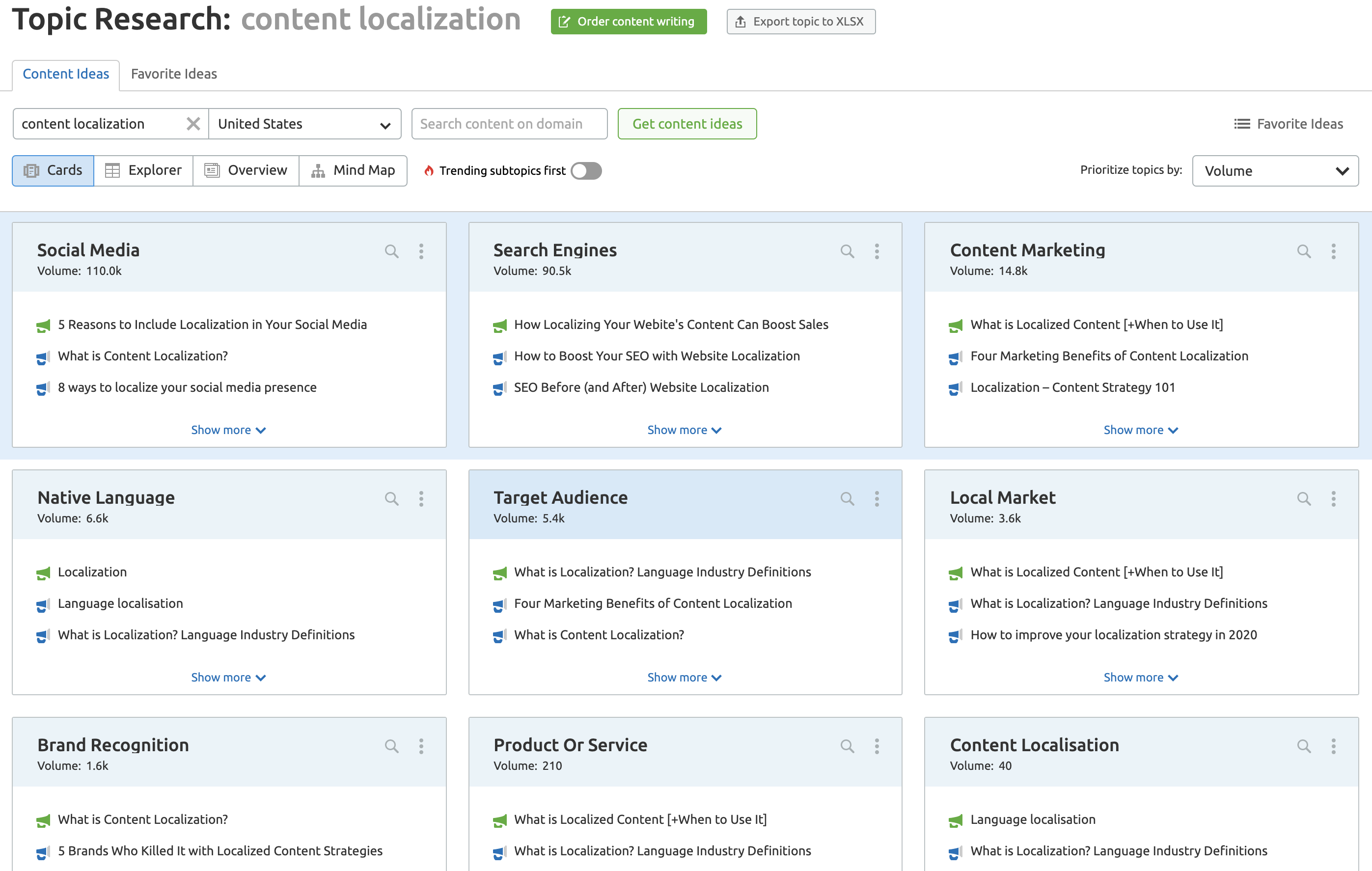 Topic Research tool
Topic Research toolUsing the tool, the Lionbridge team checks search volumes for each topic and selects the most trending (a.k.a., the most popular) subtopics that fit their profile.
2. To find more voice-search-targeted headlines, they use the Questions tab that features questions around the given area.
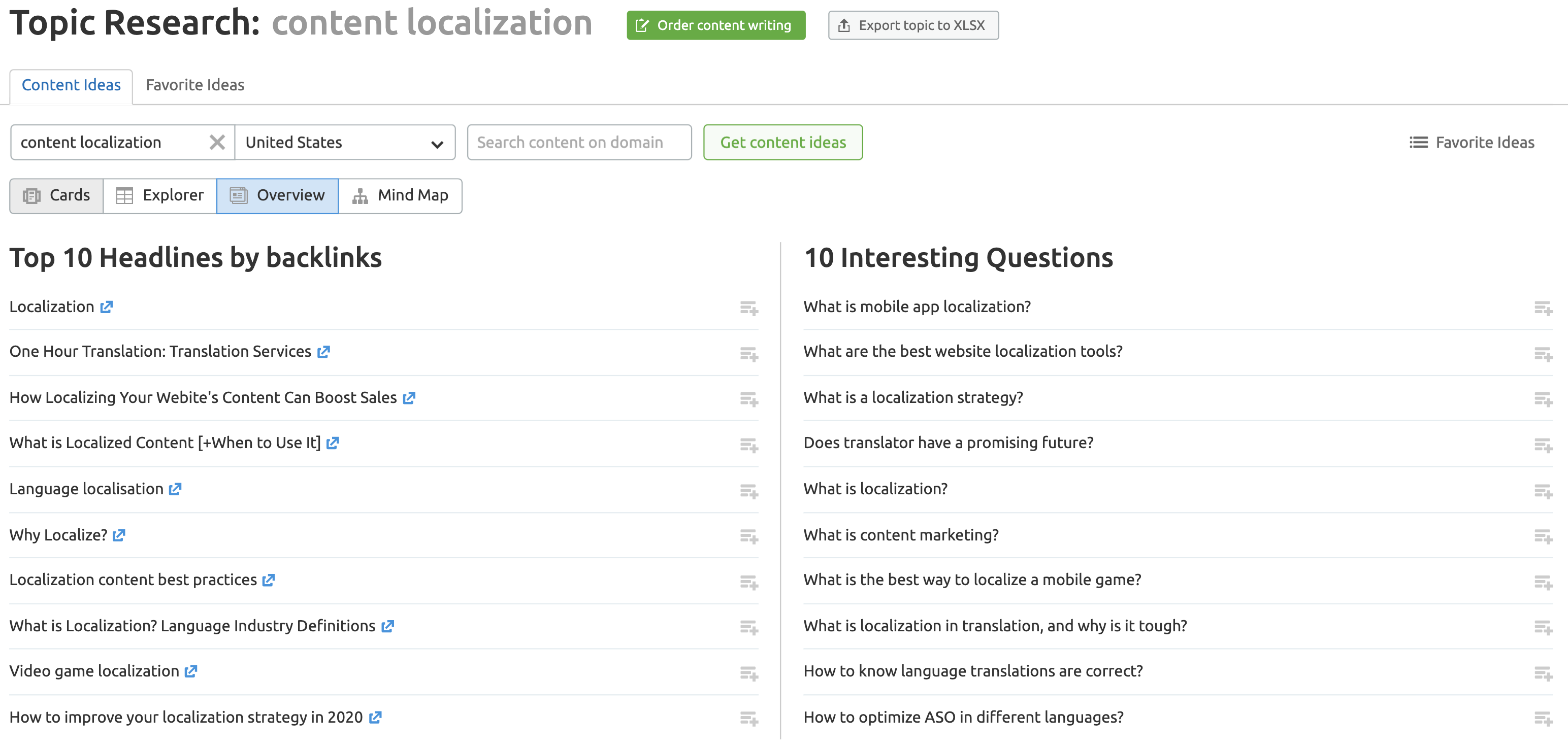 Topic Research tool
Topic Research tool3. Semrush’s Keyword Magic Tool is another great source of popular queries. Lionbridge filtered the results to questions:
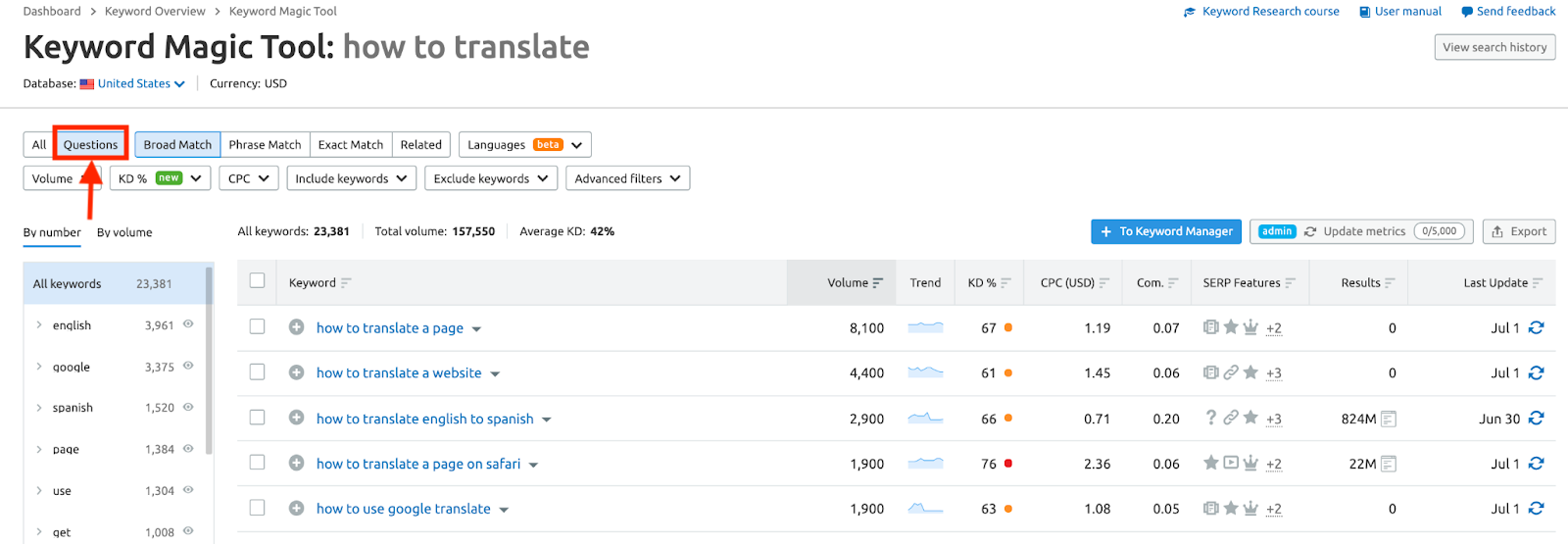
4. While the main research is run through Semrush tools, to get full coverage, Lionbridge also uses some old-school techniques.
They enter the search query in Google, go through the questions that appear within the People Also Ask box, and browse through local forums and Quora in search of topic inspiration.
Prioritize High-Volume & Lower Competition Questions
It could be easy to get overwhelmed by the volume of newly discovered questions.
That’s why, before Lionbridge makes the final list of questions, they check each keyword phrase’s search volume to prioritize their efforts by potential impact (this can be done automatically within the Keyword Magic Tool).
High-volume long-tail keywords get the first priority.
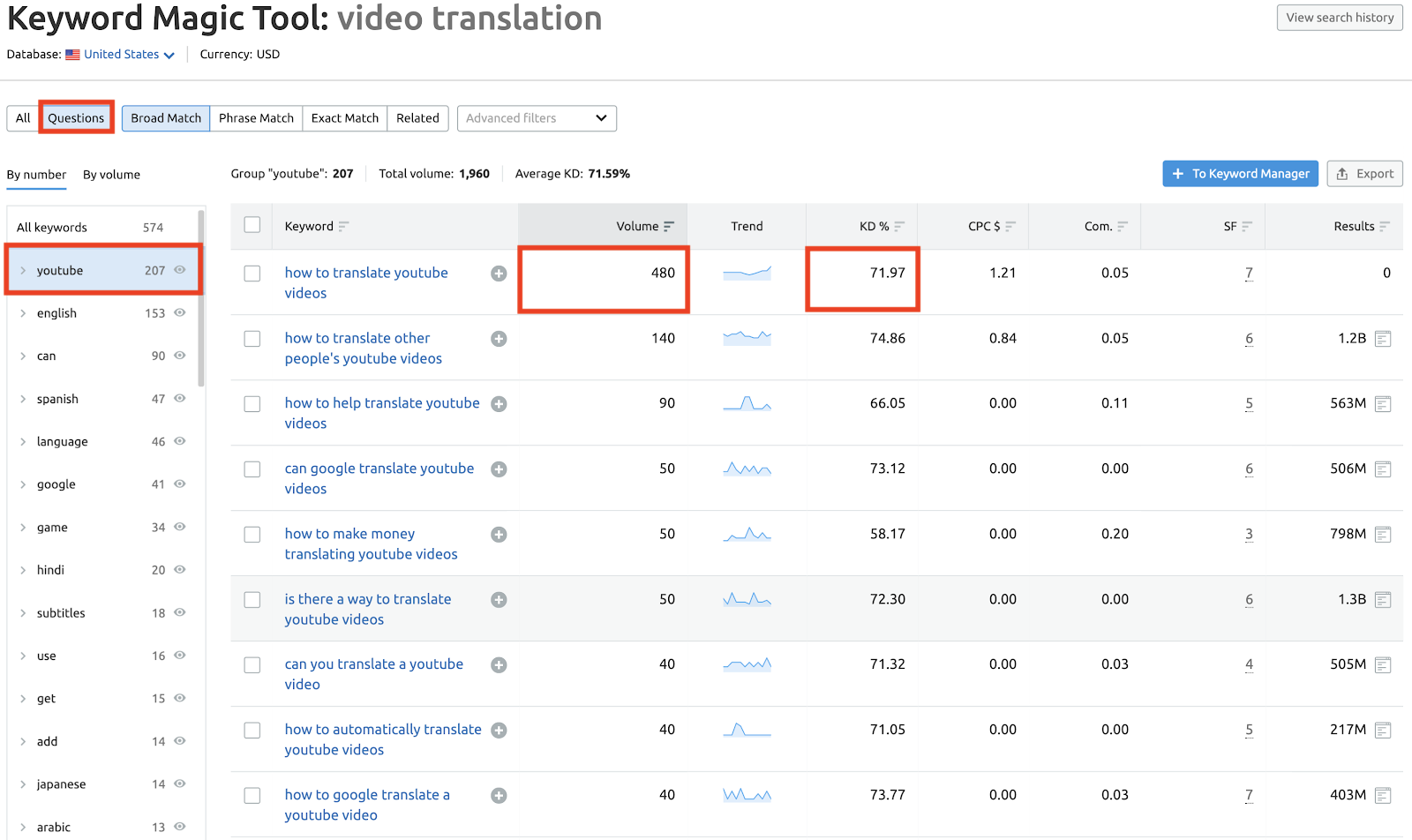 Keyword Magic Tool
Keyword Magic ToolThen, they group 4-5 logically related questions to answer in a single article.
Optimize Content for Featured Snippets
Semrush’s Voice Search study showed that 70% of all voice search answers come from pages within SERP features, and 60% of them return a featured snippet result.
So once you have your topics and questions, all you have to do is reverse-engineer quality answers into a typical featured snippet (and hence voice search) formatting.
Here are some best practices:
- Use target questions in H2’s.
- Create short paragraphs and lists right under the H2’s.
- Exclude tables as the voice search algorithm finds it hard to read their titles.
- Keep sentences down to 23 words, as the data suggests that this is the average word limit for voice search answers.
For instance, this is how Lionbridge’s featured snippet for the “tips for translation” query looks:
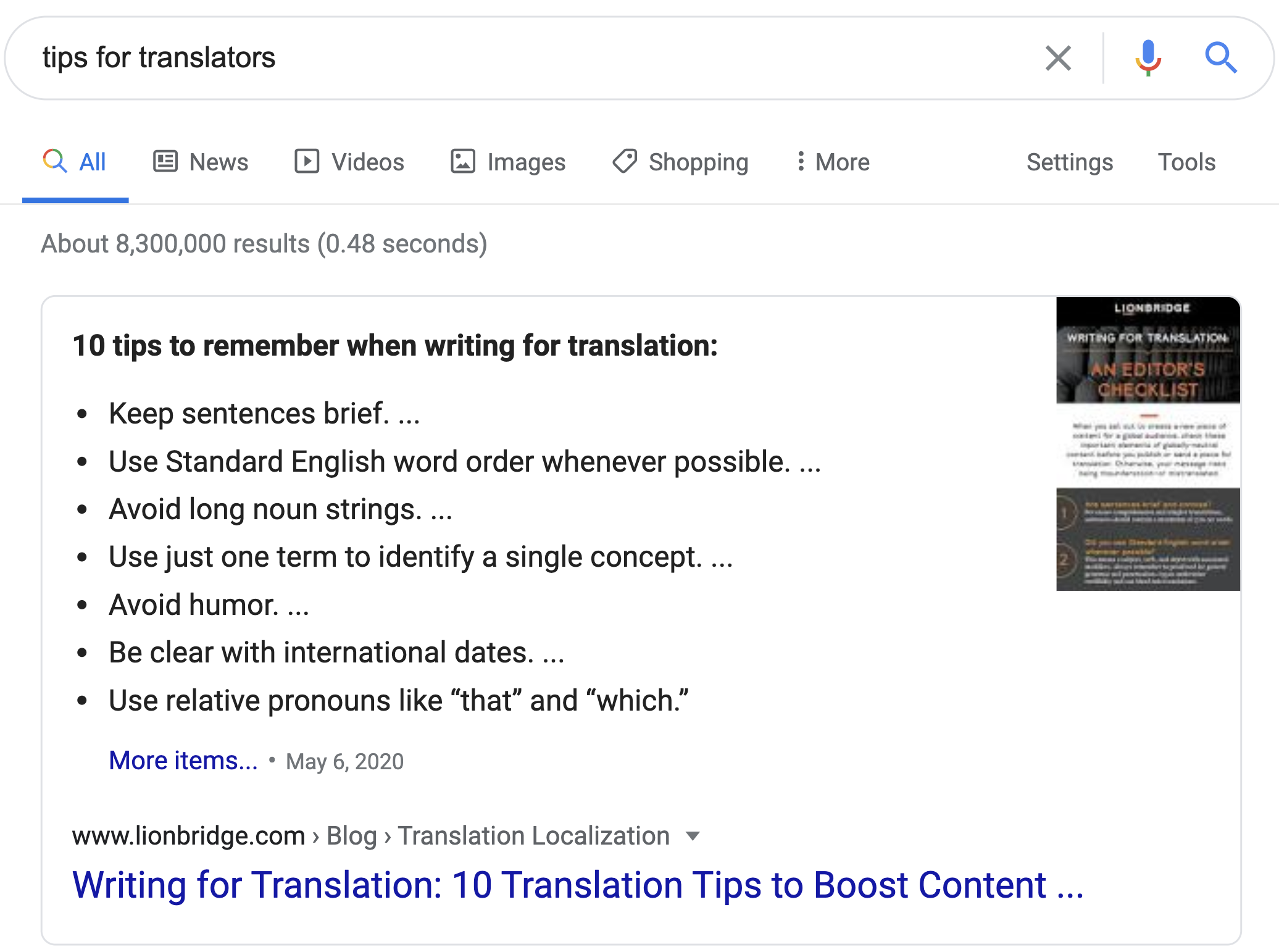
Create Actionable Briefs for Your Writers
Pass on the collected data to your content creators, including:
- Target keywords and questions.
- Title suggestions (based on Topic Research tool’s ideas).
- Formatting guidelines.
- Top articles the page will be competing against.
Once the briefs are sent out, the Lionbridge writers are free to put their creativity to work.
Use Schema Markup
Your perfect article is ready!
Should you stop there?
Lionbridge recommends putting in a little extra effort to get on Google’s radar.
The key to helping the algorithm understand you have a Q&A-like page that answers a voice search query is to use schema markup. This will increase your chances of triggering a featured snippet, which, in turn, can get you to appear within Google’s voice search answer.
(Tune in to the Marketing Scoop podcast to hear Google’s Gary Illyes give a thorough review of the impact of structured data.)
Lionbridge used Semrush’s Site Audit tool to detect pages without markup and discover any missing markup opportunities:
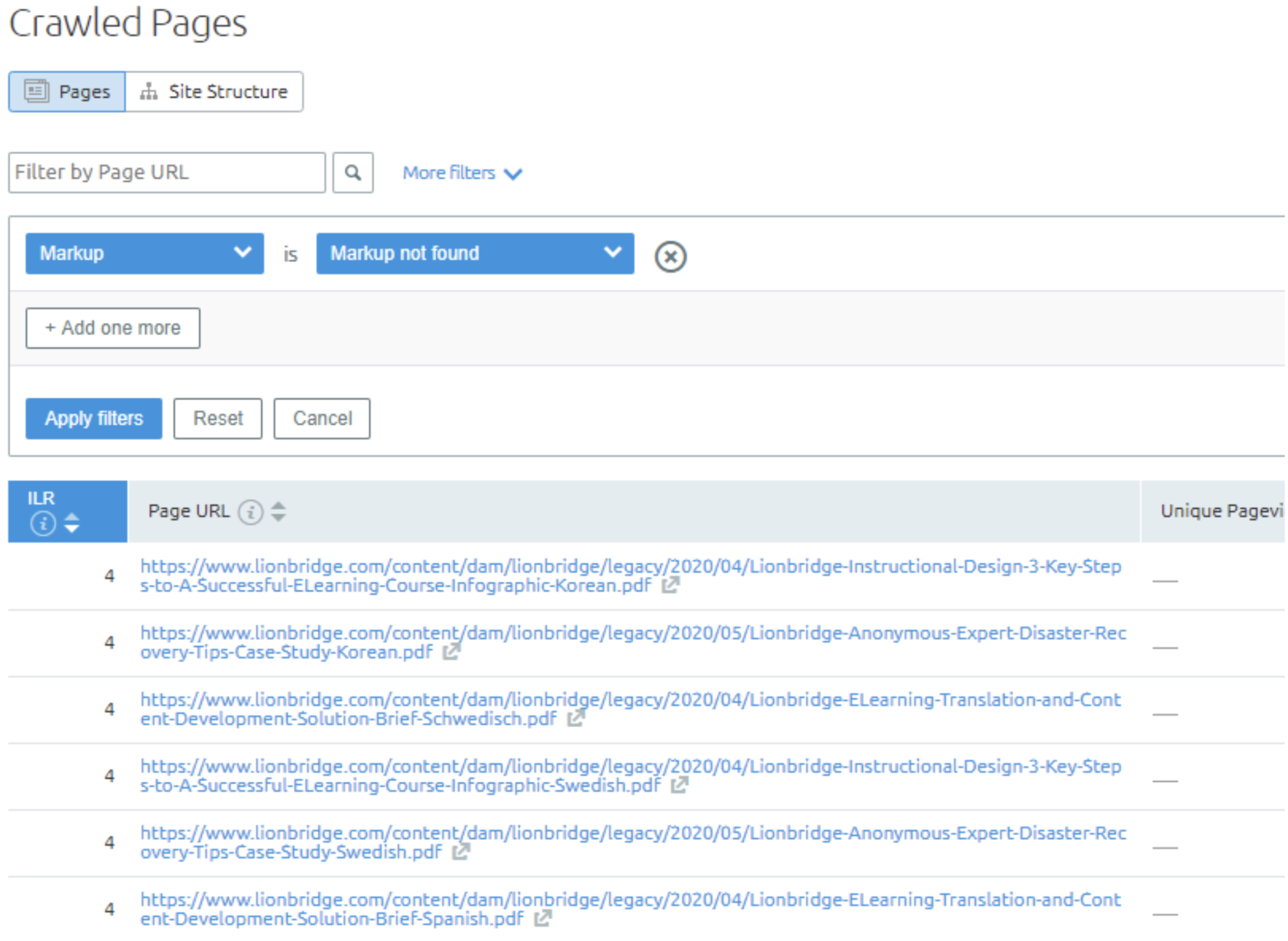 Semrush Site Audit tool
Semrush Site Audit toolIn just one year, the company managed to grow its featured snippet count by almost 40X:
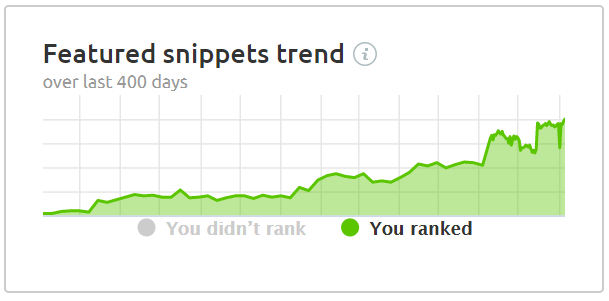 Lionbridge’s featured snippets trend
Lionbridge’s featured snippets trendDon’t Be Discouraged by the Competition
When looking at rivals for content briefs or checking their featured snippet competitors, Lionbridge spotted that Wikipedia often ranks for their top keywords.
Wikipedia has a high level of authority in the eyes of Google and strong visibility across SERPs for all imaginable queries. While this may initially sound discouraging, folks at Lionbridge actually consider this rivalry a good thing.
In fact, Brendan Walsh, the Global Search SME at Lionbridge, spotted that Google actually prefers to use a range of sources when returning results. So whenever there is an alternative to Wikipedia, the search engine is more likely to prefer it over the all-encompassing encyclopedia.
Ensure Ultimate Site Health
While content-related efforts are the key to voice search optimization, the foundation of any SEO success is site health.
From a technical perspective, Lionbridge leverages insights from Semrush’s Site Audit tool to resolve any site health issues, whether they are dealing with their own or a client’s website.
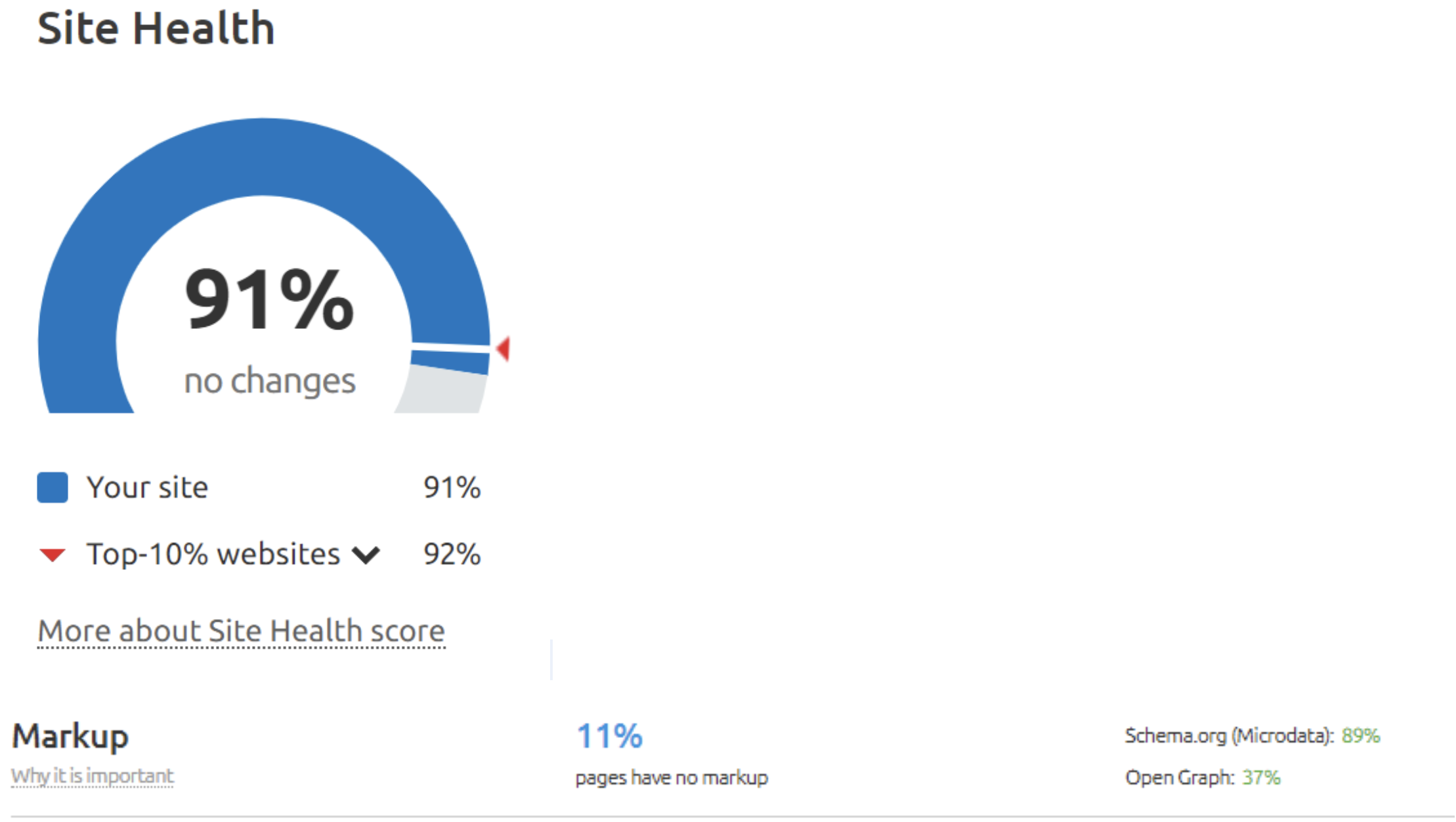
Lionbridge data in the Site Audit tool
Improving overall site performance is incredibly powerful if you want your optimized content to rank well. Yet there are some issues you have to pay special attention to:
- Page load speed.
- Content cannibalization.
- Markup usage (this helps to maximize your featured snippet optimization).
Go Local
This tip might not apply to everyone, but if you have a multilingual website, it’s certainly the one for you.
In Lionbridge’s experience, languages other than English can open up way more possibilities for appearing in featured snippets and voice search. The English-speaking SERPs are oversaturated with content, so optimizing your site in other languages can be a real goldmine.
Keep Watch on Your Results
Now that all the voice search optimization tips have been implemented, you have to monitor whether your efforts are paying off and if you need to make any strategy adjustments.
Lionbridge uses Semrush’s Position Tracking tool to keep an eye on its performance and featured snippet shifts.
The tool allows them to keep track of the site rankings and featured snippets for a range of selected keywords and run ongoing monitoring. So anytime they see a ranking drop or a lost featured snippet, they can take timely action and make improvements.
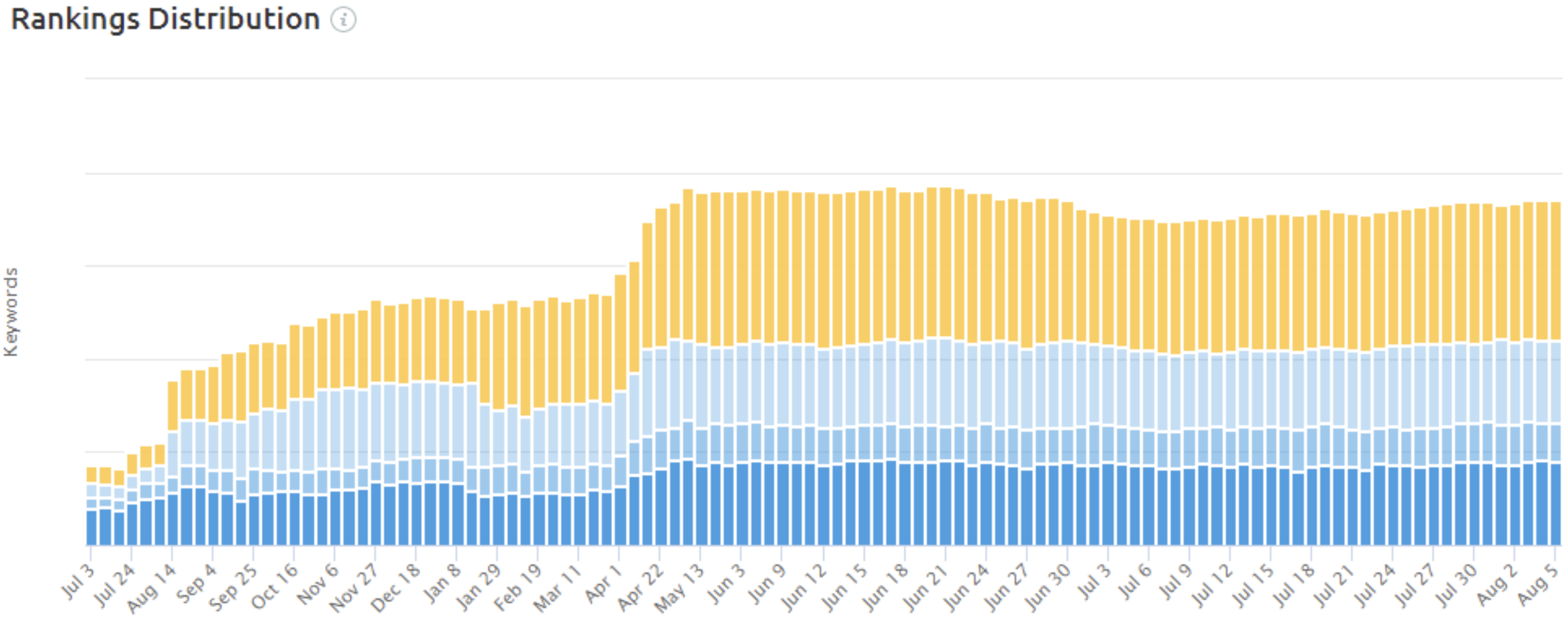 Lionbridge’s ranking distribution, with positions 1-3 in gold (Position Tracking tool)
Lionbridge’s ranking distribution, with positions 1-3 in gold (Position Tracking tool)You Can Optimize for & Win More Featured Snippets, Too!
No business is the same, and each SEO strategy needs adjustments.
Yet, you too can take a big step toward triggering more featured snippets:
- Tackle voice search.
- Create high-quality and well-formatted content.
- Maintain excellent site health.
Lionbridge chose Semrush as its go-to platform for managing its voice search optimization, and the results speak for themselves.
 Data from Lionbridge’s Google Analytics
Data from Lionbridge’s Google AnalyticsOn top of a 40X featured snippet boost, Lionbridge also managed to:
- Get 7X more keywords within the top 3 SERP spots – from 3.5% up to 27%.
- Achieve impressive influx of international traffic – from 77% to 140% increase across various markets.
- Grow their pageviews by 127% YoY.
Now that you see that voice search and the featured snippet optimization process is a matter of consistent fine-tuning and access to data, you can roll up your sleeves and aim for comparable levels of success.
Experience the full
power of Semrush
The opinions expressed in this article are the sponsor's own.



